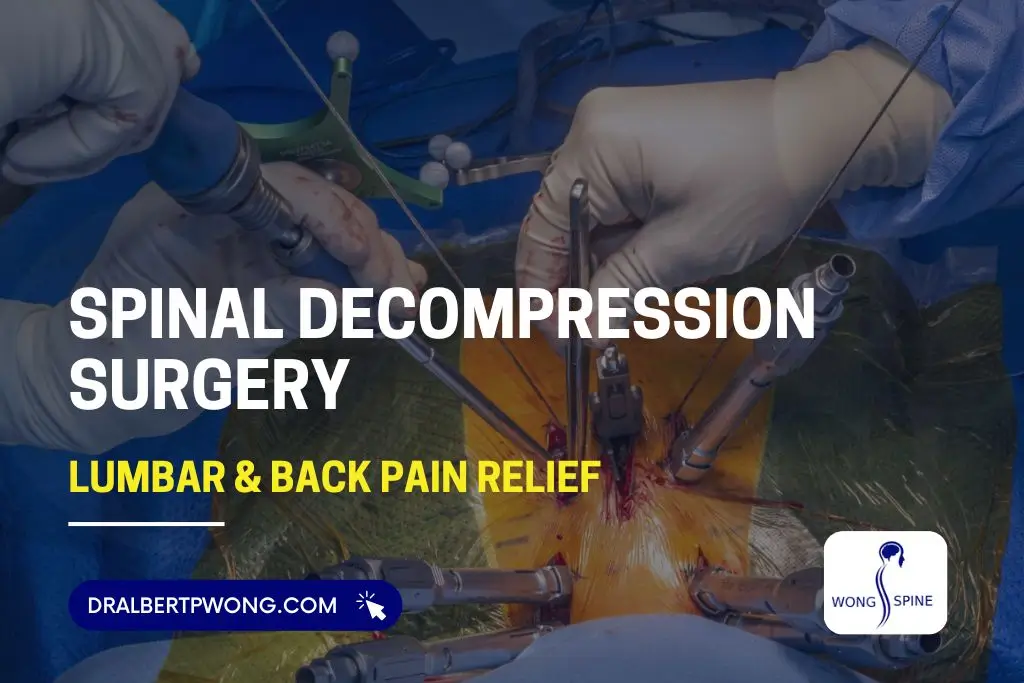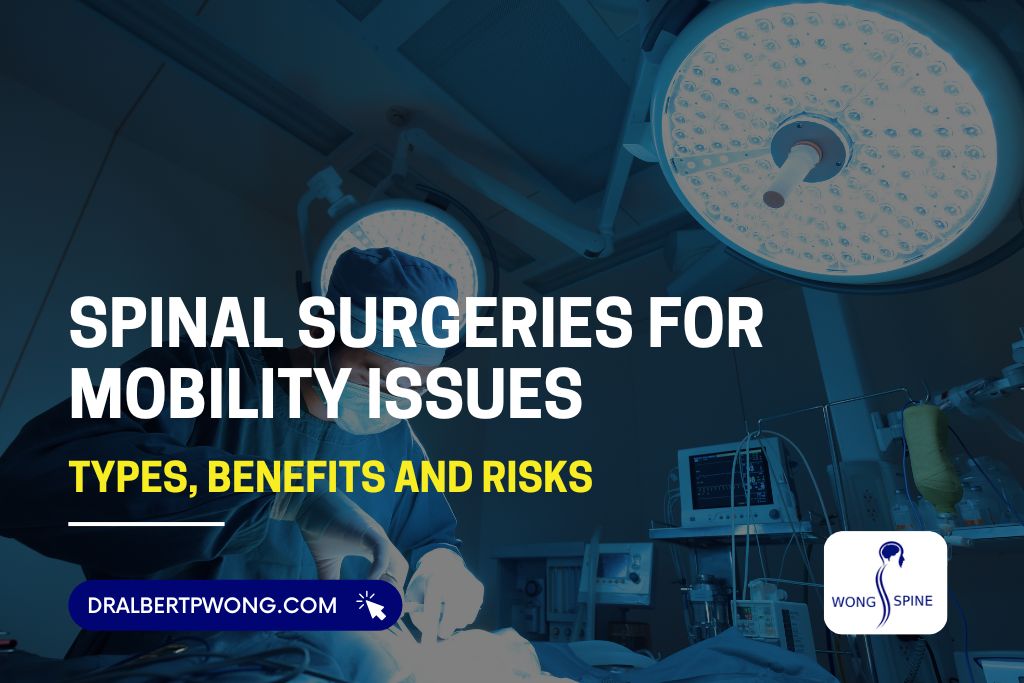Overview
Having spine surgery is a big step to help reduce pain and improve your life. The time after surgery is important for healing. Knowing what to expect can help you feel more confident during recovery.
A note from Spine Wong: Recovery time is different for everyone. It depends on the type of surgery and your overall health. Follow your doctor’s instructions and be patient with your body. With the right care, you can fully recover.
Your recovery timeline: Week by week
Recovering from spine surgery takes time. How fast you heal depends on the type of surgery and your overall health. This guide shows a general week-by-week plan for the first part of your recovery. Always follow the instructions from your doctor and care team.
Immediately following surgery (Hospital stay)
After surgery, you will be taken to a recovery area for monitoring. Nurses and doctors will check your vital signs to make sure you are stable.
Most patients are encouraged to take short walks soon after surgery. Early movement helps improve circulation and prevent complications.
- Pain management: You will get medications by mouth or IV to control pain.
- Early movement: A physical therapist may help you with your first steps and show safe ways to get in and out of bed.
- Wound care: Your surgical team will explain how to keep your incision clean and what signs of infection to watch for.
Weeks 1–2: The critical early weeks
The first two weeks are important for healing. You may feel tired and sore. Rest and gentle movement are important.
- Walking: Take short walks often. This helps blood flow and keeps muscles from stiffening. Increase your distance slowly.
- Activity restrictions: Do not bend, twist, or lift more than 5–10 pounds. Follow your doctor’s limits.
- Sitting: Sit for 30–40 minutes at a time. Use a firm chair with armrests.
- Bracing: If your doctor gave you a back brace, wear it as told. It supports your spine and limits movement.
Weeks 3–6: Gaining momentum
At this stage, your pain from surgery should start to get better. You can focus on getting stronger and moving more easily.
- Physical therapy: You will usually start outpatient physical therapy now. The therapist will show exercises to make your core muscles stronger and improve your flexibility.
- Less pain medicine: Your doctor may have you switch from strong prescription pain medicine to over-the-counter medicine like acetaminophen.
- Going back to work and driving: Depending on your job and how you feel, you may return to work. You can usually start driving once you are not taking strong pain medicine.
Weeks 6–12 and beyond: The long-term path to recovery
This period is when you transition to more active recovery as your strength returns.
- Increased Activity: You can gradually increase your activity level as approved by your surgeon or physical therapist. This may include more strenuous exercises.
- Return to Full Activity: Most patients can resume many normal activities within three to six months. Full recovery from extensive procedures, like spinal fusion, can take a year or longer as the bone continues to heal.
- Long-Term Management: Long-term success requires regular exercise, maintaining a healthy weight, and using proper body mechanics.
Factors influencing your spine surgery healing time
A general recovery timeline provides a roadmap, but personal and procedural factors affect your healing. Knowing these factors helps you and your care team manage expectations and support recovery.
Type of surgery
The kind of surgery you have affects how long it takes to heal.
- Minimally invasive surgeries, like a microdiscectomy, use small cuts and move less muscle. This usually means you recover faster and have less pain after surgery.
- More complex surgeries, like spinal fusion, join two or more vertebrae with a bone graft. It can take 6 to 12 months or longer for the bones to fully heal, so recovery takes more time.
Individual health
Your health before surgery affects how quickly you heal.
- Age and physical condition before surgery can affect recovery. Healthy, active individuals may heal faster than those with other health issues or a sedentary lifestyle.
- Medical conditions like diabetes or heart disease can also affect healing and may need special management during recovery.
Smoking status
Smoking can slow bone healing, especially after spinal fusion.
- Nicotine narrows blood vessels, reducing blood flow and oxygen to the bone graft. This makes it harder for the bones to fuse properly.
- Quitting all tobacco products is one of the most important steps to help your spine heal and lower the risk of complications.
Adherence to your rehabilitation plan
Taking part in your rehab is important for a smooth recovery. Follow your doctor’s instructions to avoid hurting your spine. Go to physical therapy to get your strength back, improve flexibility, and learn how to move safely. Patients who stick to their rehab plan usually do better in the long run.
Psychological Factors
Your emotions and mental health can affect your recovery. It is normal to feel frustrated or sad while adjusting to activity limits. Staying patient and positive can help you cope better and feel healthier overall. If sadness or low mood continues, talk to your doctor.
Preparing for your recovery at home
Prepare your home before surgery to make recovery safer and easier.
- Safety first: Remove throw rugs, loose cords, and floor clutter. Keep pathways clear and well-lit to prevent trips and falls.
- Create a recovery station: Use a firm chair with armrests. Keep medications, a phone, water, and entertainment within easy reach.
- Modify your bathroom: Install grab bars in the shower and by the toilet. Use a raised toilet seat and a shower chair for the first few weeks.
- Enlist help: Ask friends or family to assist with chores, groceries, pet care, or childcare. Prepare easy-to-make meals in advance.
Coping with pain and potential issues
While some pain is normal after surgery, effective management is important for your recovery and well-being.
- Take medication as prescribed: Follow your doctor’s instructions. Switch to over-the-counter pain relievers only when your doctor says it’s okay.
- Use ice and heat therapy: Put ice on the incision for 15–20 minutes to reduce swelling. After swelling goes down, you can use heat to relax sore muscles. Don’t put heat on an unhealed incision.
- Prevent constipation: Pain medicine can cause constipation. Drink lots of water, eat foods with fiber, and take stool softeners if your doctor recommends them.
- Recognize warning signs: Call your doctor right away if you have a fever, the incision is red or draining, you feel weak or numb, or you have trouble controlling your bladder or bowels.
Your long-term path to recovery
After the first few months, focus shifts from healing to strengthening, endurance, and safely returning to activities. This phase is key for long-term success.
The final steps of healing
- Continued fusion: After spinal fusion, the bone continues to solidify for several months, sometimes up to a year. Your surgeon will monitor progress with X-rays.
- Return to activity: Physical therapy will gradually add more challenging exercises. Start with low-impact activities like swimming, cycling, or the elliptical. High-impact sports and heavy lifting should only resume after your surgeon and therapist approve.
- Listen to your body: Stop any activity that causes pain. Discuss discomfort with your doctor or therapist.
Preventing re-injury and maintaining spine health
Long-term success depends on a lifelong commitment to protecting your spine.
- Maintain core strength: Core muscles support your spine. Keep doing the exercises learned in physical therapy.
- Practice proper body mechanics: Lift with your legs, not your back, and use safe techniques for bending and other movements.
- Prioritize a healthy lifestyle: Maintain a healthy weight and balanced diet. Avoid smoking, as it can slow bone healing.
- Stay active: Gentle, regular exercise keeps back muscles strong and flexible, supporting long-term spine health.
When to call your doctor
Some post-surgery discomfort is normal, but contact your doctor immediately if you notice:
- Fever of 101°F (38.3°C) or higher, or shaking chills
- Worsening pain at the surgical site
- Redness, swelling, or drainage from your incision
- Numbness, weakness, or tingling in your arms, hands, legs, or feet
- Loss of bladder or bowel control
- Shortness of breath or chest pain
- Pain, swelling, or redness in your calf (possible blood clot)
Recovery and Outlook
Recovery after spine surgery is different for everyone. It depends on the type of surgery and your overall health. Most people can slowly start doing normal activities over a few weeks to months.
It is important to follow your doctor’s instructions about activity limits, exercises, and medications. Regular checkups help make sure your spine is healing properly.
With the right care, many patients have less pain, better movement, and can return to their normal daily activities.
Treatment and Support at Spine Wong
At Spine Wong in Los Angeles, Albert Wong, MD and his team provide personalized care for every patient. They evaluate your spine, explain treatment options, and guide you throughout recovery.
The clinic offers advanced procedures, including artificial disc replacement and minimally invasive spine surgery. Patients receive clear instructions for recovery, follow-up care, and a safe return to daily activities.
Spine Wong is dedicated to helping you maintain long-term spine health and quality of life.
Disclaimer:
This guide is for informational purposes only and is not a substitute for professional medical advice, diagnosis, or treatment. Individual recovery times and outcomes may vary depending on the type of surgery, overall health, and other factors. Always follow the instructions of your surgeon or healthcare provider. If you experience any concerning symptoms or complications, contact your doctor immediately.






